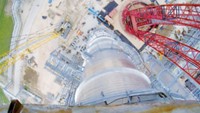Advertisement
Grab your lab coat. Let's get started
Welcome!
Welcome!
Create an account below to get 6 C&EN articles per month, receive newsletters and more - all free.
It seems this is your first time logging in online. Please enter the following information to continue.
As an ACS member you automatically get access to this site. All we need is few more details to create your reading experience.
Not you? Sign in with a different account.
Not you? Sign in with a different account.
ERROR 1
ERROR 1
ERROR 2
ERROR 2
ERROR 2
ERROR 2
ERROR 2
Password and Confirm password must match.
If you have an ACS member number, please enter it here so we can link this account to your membership. (optional)
ERROR 2
ACS values your privacy. By submitting your information, you are gaining access to C&EN and subscribing to our weekly newsletter. We use the information you provide to make your reading experience better, and we will never sell your data to third party members.
Business
Petrochemicals: Although Recovering, The Industry Will Soon Bear The Brunt Of New Capacity
by Alexander H. Tullo
January 11, 2010
| A version of this story appeared in
Volume 88, Issue 2
In 2009, the big problems for U.S. petrochemical and polymer makers were the financial crisis and recession. This year, executives expect a tenuous recovery, but it will do little to offset the onslaught of additional supply soon to hit the market.
COVER STORY
Petrochemicals: Although Recovering, The Industry Will Soon Bear The Brunt Of New Capacity
After a challenging year for the industry, most observers don’t expect much growth in 2010. Chemical Market Associates Inc. (CMAI) expects a “muted” recovery. Normal growth in ethylene demand of 4 to 5% per year won’t resume until 2011, the consulting firm says.
Grant Thomson, president of olefins and feedstocks at Nova Chemicals, is counting on inventories to give the recovery a push. As producers and consumers of ethylene derivatives looked to raise cash late in 2008, they liquidated inventories. Cautious companies are still keeping stocks low. “We haven’t gotten to the point in the cycle that customers and manufacturers have started to rebuild inventory levels,” he says. “We think we’ll see that in 2010.”
Industry executives didn’t realize the recession was coming until it was well under way, but they have been dreading what will happen in 2010 for almost a decade. They knew for a long time that companies in the Middle East and Asia were planning to build a massive amount of petrochemical capacity. Although delays have put off this new production by a couple of years, these regions are now poised to bring on as much as 10 million metric tons of capacity for ethylene and derivatives such as polyethylene.
The new capacity, which will increase global petrochemical capacity by about 8%, may spell trouble for plant operating rates. In North America, ethylene operating rates have climbed from about 70% in the first quarter of 2009 to about 85% at the end of the year, according to John Stekla, CMAI’s director of ethylene for North America. He says that in 2010, rates will likely slip somewhat as exports from North America are displaced by foreign competition and domestic demand recovers slowly, unless more domestic capacity is shut down.
“We believe that new capacity will ultimately be absorbed through the combination of market growth and high-cost producers shutting down noncompetitive assets,” says Glenn Wright, vice president of Dow Chemical’s North American basic plastics group. He notes that higher cost polyethylene producers in Europe have already taken 2 million tons of capacity off-line and plan to cut another 1.3 million tons by the end of the year.
Although dreaded, the new capacity isn’t here yet. Thomson says petrochemical exports from North America are still strong. “No one doubts that we are going to see a lot of capacity coming on in 2010 and 2011 in the Middle East, and it will impact the supply-and-demand picture,” he says. “As an industry, we’ll have to work our way through that.”—AHT






Join the conversation
Contact the reporter
Submit a Letter to the Editor for publication
Engage with us on Twitter